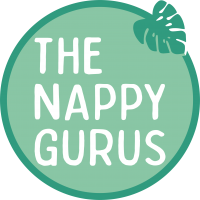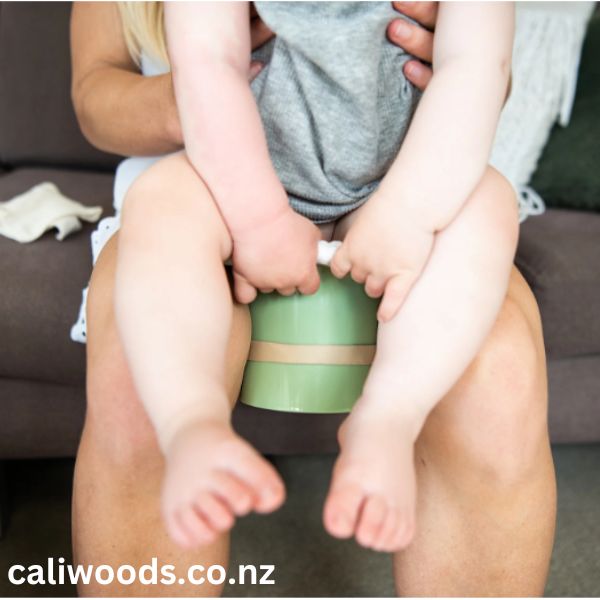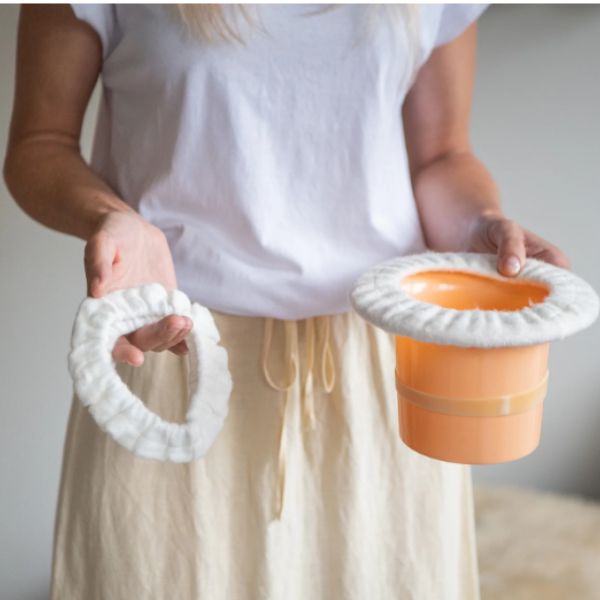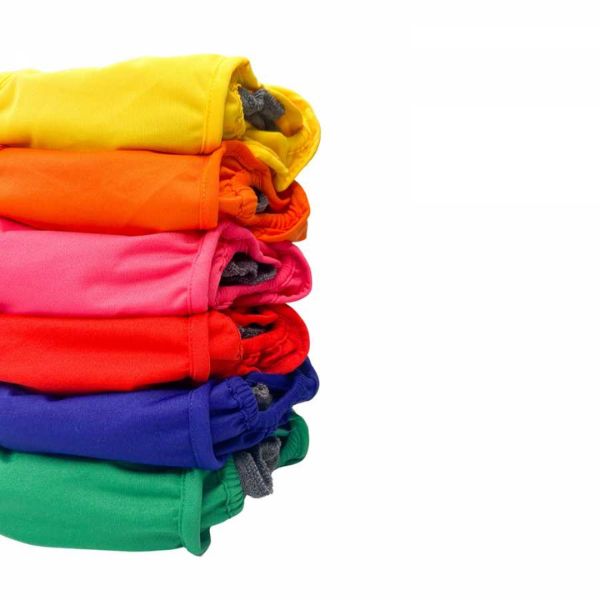What is Elimination Communication (EC)?
The Complete Guide to Elimination Communication
There is definitely an unwritten rule in the UK to start potty training at 2 years old or waiting longer for when your child is ready, I didn't even think of trying before this with my twins and one was dry day and night a few months later, the other a few months before their third birthday.
My youngest, the only one in cloth was very interested in the toilet and following the twins around and he mostly potty trained himself at 16 months BUT he was an early talker and seemed to understand. I wonder if I had made hovering over a top hat potty part of his early routine, would he have been out of nappies even earlier?
All of my children signalled immediately when they had a dirty nappy, and I needed to change them straight away or they would get distressed, once the littlest had done one poo on a potty, he never went in a nappy again. Elimination communication works on the principle that human babies are instinctive creatures who would not want to soil their sleeping or eating areas so will let off signals to warn their caregivers before weeing and pooing - just as they would signal for hunger, tiredness and any other need.
How Does Elimination Communication Work?
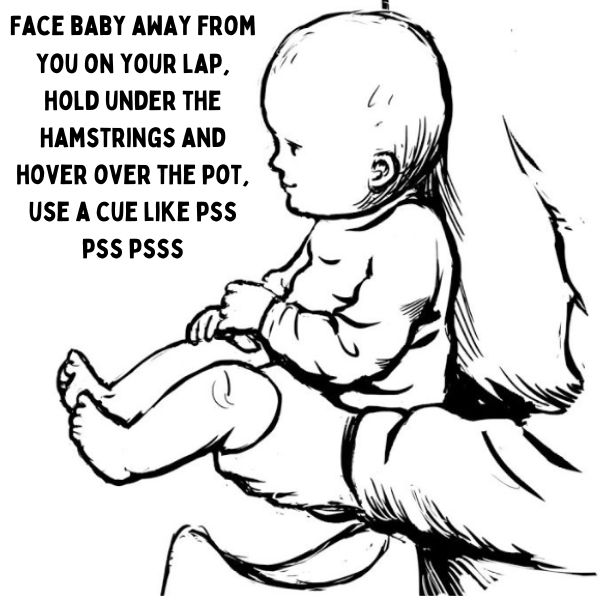
Elimination Communication (EC) or baby led potty training involves parents using babies cues, timing, signals, and their intuition to catch pees and poops from as early as day 1 rather than relying solely on nappies, in a non coercive way.
This approach focuses on recognising when a baby needs to go and responding immediately, helping them associate toileting with specific cues and behaviours - EC parents will make a pss pss or similar noise every time.
EC is standard in many parts of the world where disposable nappies are not always readily available or the norm. Instead, caregivers learn to recognise their baby’s natural rhythms and respond accordingly. EC is gaining popularity in the UK as parents seek eco-friendly, cost-effective, and natural approaches to their babies needs.
EC emphasises the idea that even infants are capable of communicating when given the right support. The process can begin at birth or be introduced later, depending on your family’s preferences and circumstances.
Marketing by giant nappy companies can lead us to assume babies and toddlers are happy to wear nappies made with plastic / paper and that there is no rush to potty train. But EC is the most environmentally friendly, zero waste and lowest budget method of dealing with babies poops and pees.
Elimination Communication works by focusing on three key principles: observation, timing, and communication.
Observing Baby’s Cues:
Babies naturally signal when they need a bladder or bowel movement by squirming, making facial expressions, grunting, crying or pausing in their activity. By closely watching these cues, you can anticipate when baby needs to go and dangle them over the potty or toilet.
Timing:
Many babies follow predictable patterns. For example, they often need to wee when they wake up or shortly after feeding. By tracking these patterns, you can anticipate when to sit them on the potty, or dangle them over the toilet or sink.
Using Signals:
You can use verbal cues or sounds, such as hissing or whispering "pss pss" to help your baby associate the sound with going to the toilet. Over time, your baby learns to respond to these cues, making the process more predictable.
The more consistent you can be the more success you will have, but it doesn’t have to be all or nothing. Some parents practice full-time EC if they are home with baby all the time, while others do it part-time, such as only in the mornings or before naps to fit around work or nursery.
What Are The Benefits of Elimination Communication?
Elimination Communication offers lots of benefits for both babies and caregivers:
Less Single Use Nappies Needed:
If using disposable diapers, every pee or poop caught in the potty saves you money and your carbon footprint will be reduced.
Less Washing if Using Reusable Nappies:
If using reusable diapers, every pee or poop caught on the potty reduces your washloads and would mean you needed less cloth nappies so less money spent.
Lower Risk of UTIs and Diaper Rashes:
Less time in wet or soiled nappies may reduce the chance of urinary tract infections and nappy rashes.
Strong Caregiver-Baby Bond:
Hanging out on the potty singing or reading enhances communication and deepens your bond.
Earlier Potty Independence:
Many EC-practising children are toilet trained and diaper free far earlier than those using conventional nappies and potty training methods.
Increased Environmental Sustainability:
With fewer diapers used, EC helps reduce the environmental impact of disposable diaper waste.
What Are The Downsides of Elimination Communication?
Expert Opinions:
Some specialists are sceptical - "Elimination communication does not follow typical development and physiology, a child younger than 12 months of age has no control over bladder or bowel movements, and very little control between 12 to 18 months."
Others believe it to be beneficial - a paediatric research nurse and potty training consultant says that "using the potty instead of diapers saves money, reduces waste, virtually eliminates skin irritation, improves the baby-parent connection, lessens colic and promotes optimal bladder and bowel health."
Time Constraints:
EC is quite a commitment, and would be very difficult if you worked full time or were away from baby often. Nurseries and child care providers may not be willing to follow babies cues.
Having a new baby is already overwhelming and a complete life change for new parents, the dedication needed for successful EC'ing may add extra pressure.
Mess:
Unless you choose to use a nappy on baby in between potty attempts you risk your floors / clothing / furniture becoming soiled. One mum laid baby on a flat terry nappy to catch any waste, whilst most EC'ers tend to use some kind of nappy, terry flat or muslin to prevent messes.
It is also important to remember mess is part of having a baby and to embrace the chaos!
How to Practice Elimination Communication
1. Identify Patterns
Start by observing when your baby seems to go throughout the day. Keep a log of when they pee and poop to identify patterns, like after waking up or feeding.
2. Look for Cues
Pay attention to your baby's signals, sudden stillness, grunting, squirming, or facial expressions. These cues indicate that your baby is about to eliminate.
3. Use Sound
Start using verbal cues or sounds, such as "pss pss" for urination or "mmm" for a bowel movement. Be consistent when holding your baby on the potty waiting for them to go to create an association.
4. Utilise Potties or Mini Toilets
Offer a potty, a small toilet seat, or even hold your baby over a sink, toilet, or bucket. The goal is to provide a comfortable and familiar place.
5. Be Patient
EC is a learning process for both caregiver and baby. Mistakes and misses are part of the journey. Stay patient, flexible, and encouraging to create a gentle experience.
6. Start Small and Build Up
If full-time EC feels overwhelming, start with certain times of the day, like mornings or after naps. Gradually increase as you and your baby become more comfortable with the process.
7. Dress for Success
Use clothing that makes quick potty access easy, avoid complicated poppers and buttons, training pants can be used too.
8. Seek Support
Join online EC communities, read books, or connect with experienced parents for guidance and encouragement.
9. Keep a Positive Attitude
EC is not about perfection but communication. Celebrate successes when baby stays dry and view accidents as learning opportunities.
Elimination Communication is a gentle, natural approach to helping babies develop early toileting awareness. While it requires patience and consistency, the benefits—from reduced diaper use to enhanced caregiver-baby bonding—make it an appealing choice for many families.
If you're interested in trying EC, start small, observe your baby’s patterns, and introduce cues gradually. Every family’s journey is unique, and there is no right or wrong way to practice EC.
Have you tried Elimination Communication? Share your experiences or ask questions in the comments below!
You can contact us directly for advice, the team chat pee, poo and periods all day long and are happy to help! We’d also love to hear your experiences or answer any questions in the comments!
You can read more of our blogs for helpful tips and guides:
Why are children potty training later?Potty training on the go: Our top tips
Potty training in cloth nappies
About the Author: Kirstin on our customer services team loves spending her days helping customers with their reusable period product needs and advising cloth nappy using families. Kirstin lives with her three teenagers and loves walking, cycling and sea swimming year round in our beautiful bay.She is excited to share her extensive knowledge and enthusiasm for all things reusable, helping a new generation of parents navigate eco-friendly choices for their children.
